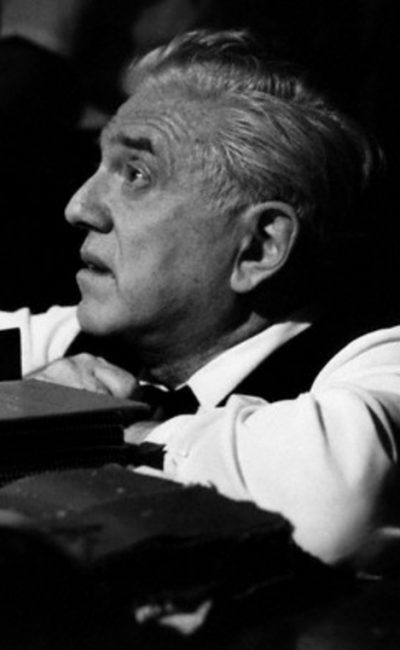Anatole Litvak
DirectorBiografía
The distinguished film director Anatole Litvak was born in the Ukrainian city of Kiev, the son of Jewish parents. His very first job was as a stage hand. In 1915, he became an actor, performing at a little-known experimental theater in St. Petersburg, Russia. As a teenager, he witnessed the 1917 Russian Revolution and the consequent nationalization of all theaters and drama schools. It was at this time Litvak decided to quit the stage and join the burgeoning Soviet film industry. He was given a job at the Leningrad Nordkino studio as a set designer, but, before long, he worked his way up to directing short features, notably Tatiana (1925), a film about children. In 1925, he left the Soviet Union for Berlin and was hired by the renowned director Georg Wilhelm Pabst to edit The Joyless Street (1925) starring Greta Garbo. He then began directing numerous short films for Ufa, and, eventually, moved on to full-length features. The most important of these was the romantic comedy Dolly macht Karriere (1930). Litvak’s stay in Germany was cut short by the rise to power of Adolf Hitler. Litvak moved to France, and directed Mayerling (1936), starring Charles Boyer and Danielle Darrieux. This production was the turning point in Litvak’s career, being a major hit on both sides of the Atlantic. He received effusive praise from critic Frank S. Nugent of the New York Times, who commented on the director’s “superb assembling of scenes” and the “matchless performances” of the stars (September 14,1937). Hollywood soon beckoned, and, from 1937 to 1941, Litvak became a contract director for Warner Brothers. His first film was The Woman I Love (1937), which starred his future wife Miriam Hopkins. His experience with diverse aspects of stagecraft, as well as his fluency in four languages (Russian, German, French and English), enabled him to competently tackle a wide variety of subjects: from sophisticated continental comedy (Tovarich (1937)) to historical drama (Anastasia (1956)) and romance (All This, and Heaven Too (1940)). Litvak was at his best directing taut, suspenseful crime dramas, such as The Amazing Dr. Clitterhouse (1938) with Edward G. Robinson and Humphrey Bogart, hailed by Variety as “an unquestionable winner”; and two tough action films starring John Garfield: Castle on the Hudson (1940) and Out of the Fog (1941). Having become an American citizen in 1940, Litvak enlisted in the US army and collaborated with Frank Capra on the wartime “Why we Fight” series of documentaries. At war’s end he left the army with the rank of colonel and returned to Hollywood to direct the classic thriller Sorry, Wrong Number (1948) with Barbara Stanwyck. Arguably his best film was the superb psychological drama The Snake Pit (1948), Hollywood’s first attempt to seriously examine the treatment of mental illness. Indeed, the film was so influential that it precipitated changes in the American mental health system. Litvak was nominated for an Academy Award as Best Director, but lost out to John Huston for The Treasure of the Sierra Madre (1948). In 1949, the director — who had once described Hollywood as a “Mecca” — returned to Europe and settled in Paris, working only infrequently. He undertook several projects under contract to 20th Century Fox (in 1951, and from 1955 to 1956). Notable among his later efforts are two contrasting films with Ingrid Bergman: the lavishly produced Anastasia (1956), about a woman claiming to be the Romanoff dynasty’s last living direct descendant; and the moody, introspective romantic drama Aimez-vous Brahms? (1961), shot on location in Paris. In stark thematic contrast to these, he also directed the suspenseful wartime thriller The Night of the Generals (1967), starring Peter O’Toole. Anatole Litvak died in a hospital in Neuilly, Paris, in December 1974 at the age of 72.

